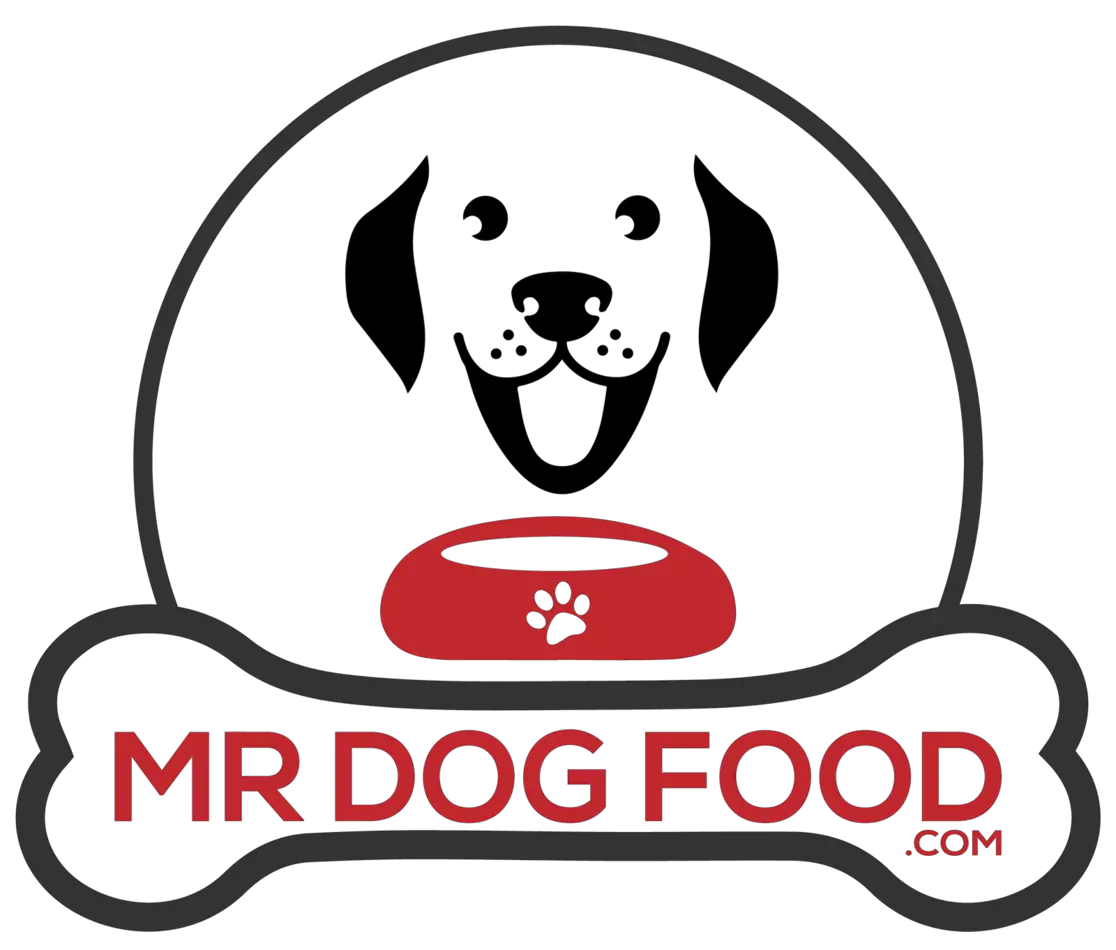This post contains affiliate links.
Bologna meat is a regular fixture in many sandwiches we enjoy, and if your dogs are like most, then they’ll hang around as you enjoy this treat. Is it a good idea to share your bologna with them? Is bologna a good treat for your dog?
Bologna is a good dog treat, but only when given in moderation. Making it a regular feature in your dog’s diet isn’t recommended as it’s neither healthy nor nutritional. It contains very few nutrients and a high amount of fats, nitrates, sodium, and other such compounds.
The rest of this article will look at everything you need to know about using bologna as a regular treat for your furry friend, including bologna ingredients that can affect your dog’s health and lead to serious problems like pancreatitis.
Table of Contents
What Is Bologna?
Bologna (or baloney) is a type of meat or sausage that can be traced to the Italian city of Bologna where it’s known as mortadella. In the US, you’ll find bologna sausage on the same aisle as hot dogs and other similar meat products.
Additionally, bologna is a combination of different types of meat ingredients. The constituents are converted to paste and then sprinkled with peppercorns, pistachios, and fats. The final product is tasty, but it doesn’t have a lot of quality nutrients. It’s also often viewed as a cheap form of meat, but it couldn’t be more different from real meat.
What Are the Ingredients in Bologna?
Bologna is processed meat filled with fats and salts. Some of the common ingredients you can expect to find in most bologna mixes include:
- A combination of beef, pork, and chicken products
- Moderate amounts of protein
- High level of sodium
- High level of nitrates
- Very little vitamins and minerals
- Corn syrup
This combination gives you processed meat with a very high calorie count, some protein, and not much else.
Should You Add Bologna Meat to Your Dog’s Diet?
If you’re looking for a healthy and nutrient-dense addition to your dog’s diet, it’s best to avoid bologna meat. It’s a treat you should only share sparingly. Like other processed meats, bologna has been through several processes to make it edible and tasty enough to go on your burgers and sandwiches.
Research has shown that these types of meat aren’t good for humans. If it’s not healthy for regular human consumption, you should be doubly skeptical about making it a regular treat for your dog.
Here are some dangers of processed meats like bologna:
- They contain a high amount of salt and are likely to cause cancer and hypertension.
- They contain nitrosamines known to increase the risk of cancer.
- They’re likely to cause stomach cancer.
- They can lead to heart disease and high blood pressure.
- They’re known to cause chronic obstructive pulmonary disease.
The above are just some of the science-backed dangers of processed meat like bologna. Remember, the bulk of the research was done on humans. However, the effects on dogs will likely be similar or worse. So, while bologna is unlikely to harm your dog immediately, it can be dangerous for their long-term health. This is especially true for dogs at risk of developing some of the ailments we’ve seen above.
So, can you use bologna as a dog treat? Yes, you can, since it doesn’t pose any immediate side effects for most dogs, especially when eaten in moderation.
The importance of giving dogs bologna in moderation cannot be overemphasized. The scientific evidence above should be a legitimate cause for concern as you hand out the pieces to your dog. There’s always the risk of disease down the line. Some pet owners only hand out tasty bologna treats as a reward for good behavior, and even that may be too much.
Do Dogs Enjoy Bologna Meat?
Dogs enjoy all kinds of meat, and most of them need protein. Bologna may be far removed from real meat, but dogs will still love a few bites due to the makeup of the product.
Also, dogs can’t differentiate between “unhealthy” meat like this and healthy ones, so it’s up to you to always pay attention to just how much of this they consume. Don’t keep the pack within reach to ensure your dog doesn’t go to town on it.
What Are the Benefits of Bologna for Dogs?
The main benefit of bologna in a dog’s diet is the protein source it provides. Proteins deliver amino acids to your dog’s body, helping in the tissue and cell-building process. A slice of bologna may contain as much protein as one egg.
The second benefit is that it’s an excellent mood lifter for dogs. Most dogs love the taste, so if your dog looks like they want a “pick me up,” a few pieces of bologna can work wonders.
These benefits notwithstanding, it’s still a good idea to focus on other sources of protein for your canine friend. The risks of making this a regular fixture of your dog’s diet far outweigh the few benefits we’ve covered here.
How Bologna Ingredients Can Affect Your Dog’s Health
Here’s how some of the ingredients in bologna can affect your dog’s health:
Nitrates
These compounds are added to the bologna to give it an appealing smell and retain the cured meat flavor. They’re also responsible for the pink color and prevent the growth of harmful bacteria. However, these compounds are harmful to both humans and dogs.
Giving your dog large quantities of nitrates as contained in bologna can lead to stomach ulcers, pancreatitis, kidney disease, and liver disease.
Sodium Chloride (Salt)
Salt is an important ingredient in the flavor of bologna. The high concentration of salt in them is why they’re known as salt bombs in some quarters. You can find up to 30 mg (0.001 oz) of salt in a 2 g (0.07 oz) slice of bologna.
Such a level of salt concentration can trigger a barrage of short-term reactions, including increased thirst, bloating, and frequent urination. In the long term, excess salt can cause heart disease and hypertension for your dog.
Fats
As we covered earlier, bologna has high fat and calorie content. The fat in bologna isn’t healthy dietary fat (a beneficial type of fat). Instead, it contains omega-6 fatty acids, which are generally hazardous if they’re not balanced out with omega-3 fatty acids.
The amount of fat in bologna is such that just two ounces (56.7 g) contain as much fat as a large cup of ice cream. So, regularly feeding your dog with bologna treats will get them overweight. This may be followed by pancreatitis, diabetes, and heart disease.
Spices and Herbs
Since bologna is a mash-up of some meat products, the manufacturers have to look at options for improving its taste and making it edible. This is why they pack in some herbs and spices in the processing stage. Some of the options include garlic and onions, which can trigger adverse reactions in dogs when consumed in copious amounts.
Corn Syrup
Corn syrup is a popular additive used by many bologna producers. It’s also useful for improving the meat taste. However, corn starch increases the sugar level in your dog’s body. Some of the consequences of such a high sugar level include heart disease and diabetes.
BHA (Butylated Hydroxy-Anisole) and BHT (Butylated Hydroxy-Toluene)
These are synthetic oxidants that can trigger severe health problems in dogs. Some of the ailments caused by regular consumption of these oxidants include kidney, liver, and thyroid problems. Depending on the level of consumption, these oxidants can also affect the dog’s neurological system and also cause cancer.
What Are the Possible Side Effects of Bologna Meat in Dogs?
As we covered above, bologna meat is rarely toxic in dogs. Most of the dangers only come into effect years down the line. However, there have been quite a few examples of dogs reacting badly to bologna treats. The common side effects include:
Gastrointestinal Distress
As we’ve established thus far, bologna is low-quality meat that contains lots of unhealthy fats, far too much salt, and lots of preservatives. The combination of these ingredients leads to a product that’s too much work for the human digestive system as developed as it is. A dog’s digestive system will find it even more difficult to digest this product.
This leads to stomach upset in some dogs, with symptoms such as pain, diarrhea, and vomiting. If you notice any of these symptoms after giving your dog some bologna treats, visit the vet for some remedies and be sure to remove bologna from the diet completely.
Pancreatitis
This is inflammation of the pancreas. It disrupts some of the organ’s main functions, including insulin production, digestive enzyme secretion, and more. The result is a severe imbalance in your dog’s blood sugar. The condition can be life-threatening, depending on the severity of your dog’s reaction.
Some of the symptoms that follow the condition include:
- Lethargy
- Diarrhea
- Abdominal pain
- Vomiting and fever
This disease is a bad one for your dog to suffer from because even after the sickness has passed, there could be permanent physical damage. There’s also a high risk of the disease returning in the future.
Final Words
Bologna is a good dog treat, but only in tiny amounts at a time. You also need to space out the frequency to ensure the small amounts don’t add up and lead to some health problems for your dog.
The high amounts of fats, salts, nitrate, and sugar make it an unhealthy treat for long-term consumption. In the short term, excess consumption of bologna can lead to stomach upsets. In worst-case scenarios, it can lead to the near-immediate onset of pancreatitis.
If you’re interested in what dogs can eat instead of dog food? Then you should take a look at this article I wrote about what you can feed your dog if you run out of dog food.
Related Articles
- My Dog Ate Vienna Sausage. Will He Be Okay?
- Can Dogs Eat Cloves? Is It Toxic?
- Can Dogs Eat Doritos? Should They Really?
- Can Dogs Eat Granola? Read This First!
- Can Dogs Eat Poppy Seeds? (Read This First)
Sources
- Top Dog Tips: Can Dogs Eat Bologna Meat? Benefits and 7 Potential Side Effects
- Can I Give My Dog: Read This Before Making Bologna a Regular Dog Treat!
- Doggie Designer: Can Dogs Eat Bologna? Is Bologna Safe for Dogs?
- Dog Food Genius: Can Dogs Eat Bologna?
- Chihu Life: Can Dogs Eat Bologna? Harmful Effects of Bologna on Dog’s Health
- NCBI: Mechanism of Salt-Sensitive Hypertension: Focus on Adrenal and Sympathetic Nervous Systems
- NCBI: Cured Meat Consumption, Lung Function, and Chronic Obstructive Pulmonary Disease among United States Adults
- NCBI: Diet, microbial virulence, and Helicobacter pylori-induced gastric cancer
- NCBI: Review of salt consumption and stomach cancer risk: Epidemiological and biological evidence
- NCBI: Meat consumption and mortality – results from the European Prospective Investigation into Cancer and Nutrition
- NCBI: Nitrosamine and related food intake and gastric and oesophageal cancer risk: A systematic review of the epidemiological evidence
- NCBI: Meat, fish, and colorectal cancer risk: the European Prospective Investigation into cancer and nutrition
- PubMed.gov: Prospective study of nutritional factors, blood pressure, and hypertension among US women
- MDPI: Natural and Synthetic Antioxidants – A section of Antioxidants
Mrdogfood.com is a participant in the Amazon Services LLC Associates Program, an affiliate advertising program designed to provide a means for sites to earn advertising fees by advertising and linking to Amazon.com. We also participate in other affiliate programs which compensate us for referring traffic.





